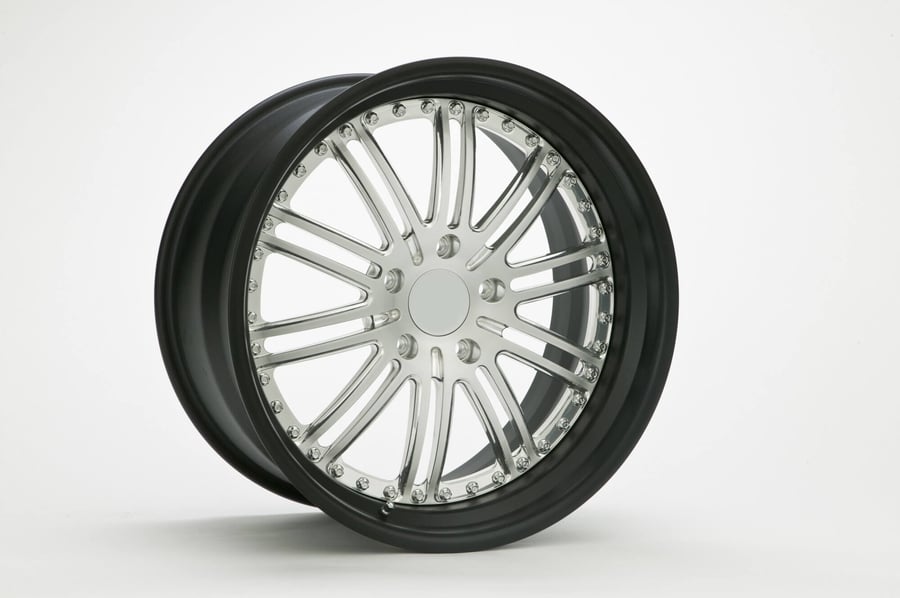
Know Your Wheels Before You Buy
In 2017 there were 370 wheel and tire manufacturers participating in the SEMA Show. There were over 175 new products introduced at this national auto industry event.
With this kind of innovative development and market participation, it’s easy to fall in love with something new and cool-looking. But before you throw down your credit card, you need to make sure your new wheels will work on your vehicle.
Comparing negative vs. positive offset will ensure you find the right wheels to fit your car. Keep reading to learn how vital offset is.
What Is Offset?
When buying wheels, you’ll see this measurement listed along diameter and width. This distance is crucial because it tells you the distance between the wheel’s mounting surface and the center of the wheel.
You need to buy a wheel with the right offset because this ensures that it can freely move. Buy the wrong offset, and your wheels could rub against the struts, brakes, or fenders.
How to Measure Offset
You’ll see offset expressed in millimeters. To get this measurement, a tape measure is used to find the distance from the wheel centerline wheels to the mounting surface.
You’ll see the number as a positive, negative, or zero. This indicates which side of the centerline wheels the offset falls on.
Backspacing
You might see the term backspacing. This is an older term used for measuring wheels. This measuring method will tell you the total width of the wheel, and then the distance from the inside edge to the mounting surface.
Positive Offset
A positive offset means that your wheel’s mounting surface is closer to the face of the wheel. This is the street-facing part. The bigger the number, the further towards the front of the wheel the mounting surface is.
Zero Offset
This is the easiest measurement because there isn’t one. The mounting surface of the wheel is in line with the centerline of the wheel.
Negative Offset
A negative offset means that the mounting surface is on the inside half of the wheel. This means it’s closer to the car than the street.
Negative Vs. Positive Offset Effects
Positive and negative offset comes into play when you fit new tires onto your car. If you want to go wider, you’ll need to consider adjusting the offset.
If your offset is too positive, you risk the inside of the tire hitting your suspension. To fix this, bring the offset down, so it’s closer to zero. This moves the tire out.
If your offset is too negative, then the outside of the tire will rub on the car’s body and fenders. Reduce the offset to bring the tire in towards the car.
Find Your Offset and Choose Your Tires
At this point, you’re ready to measure your tires and find out what kind of offset your method wheels have. Once you know this information, you’re ready to start shopping for a new set of rims.
Debating the finer points of negative vs. positive offset is interesting for us car enthusiasts, but ultimately, you’re safest sticking with whatever is currently on your vehicle.
Browse our extensive inventory and find the perfect aftermarket wheels for your car.
Frequently Asked Questions
Is positive or negative offset better?
No, neither of these is better in the real sense of the word. Both of them have several advantages and disadvantages. The offset should ideally be zero! But that is hardly always the case. Hence, there are negative and positive offsets. In a negative offset, there is a chance of the outsides of a tire hitting or coming in contact with the bender and the suspension. The opposite happens in a positive offset, where the insides may come in contact. It is best to have a zero offset at all times.
Do negative offset wheels stick out?
Yes, they do. Negative offset wheels have the tendency of sticking or jutting out from underneath the vehicle. This is one of the reasons why some drivers tend to go for a negative offset as it is seen to provide a more aggressive and menacing stance compared with positively offset wheels which is seen as relatively staid. However, there are still some issues with the offset and it is not recommended unless off-roading or racing is what you are planning to do.
Is negative offset better for offroad?
To an extent, they are actually better for offroading and for racing purposes. Most of the world’s top racing cars come packed with a negative offset. However, there are certain sacrifices that have to be made when you are choosing negative offsets. Remember that the wheels will be slightly inclined to the outside, meaning they will come in contact with the most important parts of the chassis. Therefore, negatively impacting these wheels is a price that has to be paid for better offroad performance.
Is too much negative offset bad?
Yes, indeed! Too much negative offset is severely harmful for your vehicle. First of all, it will allow the wheels- which are tilted and jutting out towards the outside- to come in touch with the bender, the underneath of the chassis and a lot more areas where they are not supposed to touch. Once that happens, tires will wear away rapidly and they will also not respond too well to hard braking or sudden acceleration. It is always a good idea to have a zero offset, which leads to very few issues.
